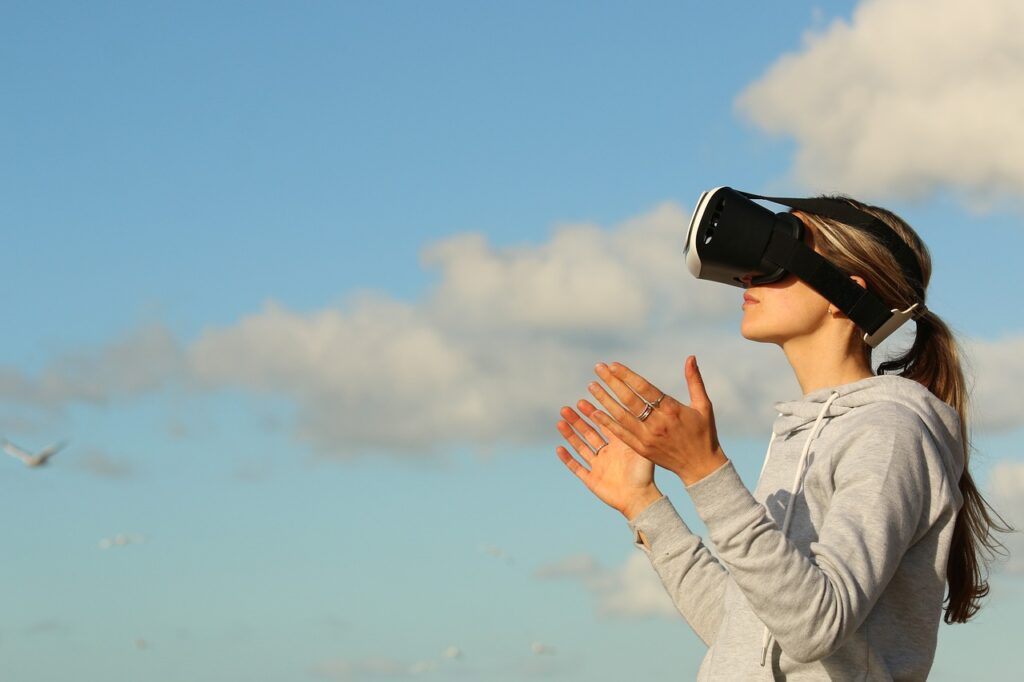
Have you ever wished that you could go back in time and see all of the original seven wonders of the ancient world? Or perhaps you’ve dreamed of being present at some of history’s most significant military or cultural moments?
While travel to distant lands feeds some of this curiosity, it is sometimes limited in what it can offer ancient history fans. Virtual reality is changing all of that, reimagining our understanding of ancient civilizations and allowing us to walk through time.
Table of Contents
1. Immersive Virtual Tours of Significant Sites
VR allows tour organisers to recreate historical locations, offering an immersive experience that traditional methods cannot. Imagine viewing the Colosseum in Rome as it once looked, with the crowds cheering as gladiators battled to the death. You would feel as if you’re right there in the moment.
Virtual reality technology can bring epic scenes like this to life. This immersive quality is especially important for those ancient sites where iconic structures have fallen into disrepair. It is not always possible, or feasible, to restore them to all of their former splendour.
However, one can still enjoy truly immersive tours of significant sites without the aid of virtual reality headgear. A good example is the Band of Brothers Tours. Tour participants enjoy a range of activities recreating the events surrounding the D-Day invasion on the beaches of Normandy during World War 2.
2. Reconstructing Lost or Destroyed Artifacts
History books are filled with wonderfully thrilling tales of ancient empires and the important events of bygone eras. Sadly, there is still so much that we don’t know, as much of the evidence of these cultures has been lost to the passage of time. This leaves us with more questions than answers.
Of course, in some cases, archaeology has offered us remnants of these marvels. You can view fragments and artefacts of magnificent ancient cultures by visiting the best museums in Greece and Italy. Until recently it was up to the human imagination to reconstruct what was lost or destroyed.
Thankfully, we can now do much more than simply imagine what they looked like before their demise. VR technology allows its users to see ancient wonders like the statue of Zeus or the Hanging Gardens of Babylon, as they once were. For a brief moment in time, it brings back that which has been lost.
3. Virtual Time Travel to Ancient Civilizations
Exploring Italy’s historic cities will give you a glimpse into ancient civilizations. A layer of volcanic ash coated everything in its path in the ill-fated city of Pompeii. This has ironically preserved this moment in time for future generations to see. One can visit this ancient city and see the ruins to this day.
However, tours that leverage VR headsets and other immersive technologies can go even further. They can reconstruct and reenact the scenes of ancient daily life before tragedy struck. In this way, VR turns everyday tourists into intrepid explorers and time travellers.
This is, perhaps, VR’s greatest triumph. It provides entry into a world where anything is possible, a world that exists outside of time. It allows us to explore ancient cities like Pompeii, not as the ruins they are today, but as they once were. This ensures that the people who once lived there will never be forgotten.
4. Educational and Interactive Learning for Students
The educational value of VR has been under the spotlight for a few years now. Some museums have employed VR and similar technologies to varying degrees in their establishments. This is especially true for museums of art like the Tate, the Rijksmuseum, and the Smithsonian American Art Museum.
However, it comes as no surprise that more science-oriented centres have dabbled in VR too. The Kennedy Space Center Visitor Complex and the Museo Nazionale della Scienza e della Tecnologia Leonardo da Vinci, are notable mentions.
VR also helps history teachers share knowledge with their students about ancient history more interactively, fostering deeper engagement. This highlights all the potential benefits for classrooms, lecture halls, museums, and major centres for historical research.
Final Thoughts: The Future of VR in Historical Research
VR does so more than offer an entertaining and immersive experience. This innovative technology is revolutionizing the way we study and engage with history.
In time, virtual reality experiences will play an ever greater role in historical research, giving us deeper insights into the ancient world. VR will also instil a new appreciation for learning about history in younger and future generations.
Will it ever replace the value of historical documents and archaeological finds? No. Rather, it will enhance the pieces of the historical puzzles we have been left with, bringing our reality just that bit closer to our ancestors.
